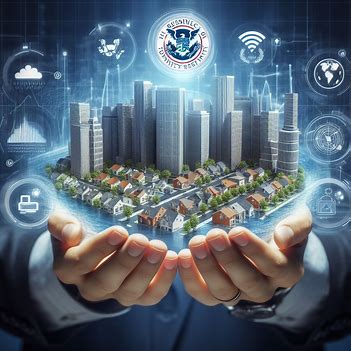
FEMA's Role in Shaping Community Resilience: Insights for Urban Planning and Development
Introduction:
In the wake of natural disasters and emergencies, the resilience of communities is put to the test. The Federal Emergency Management Agency (FEMA) plays a crucial role in disaster response and recovery efforts, but its influence extends far beyond immediate relief. FEMA's strategies and initiatives offer valuable insights for urban planning and development, helping communities build resilience to withstand and recover from future challenges. This blog explores FEMA's role in shaping community resilience and the lessons it provides for urban planning and development.
Understanding Community Resilience:

Community resilience refers to the ability of a community to withstand and bounce back from adverse events, such as natural disasters, economic downturns, or social disruptions. It encompasses not only physical infrastructure but also social cohesion, economic stability, and effective governance. FEMA recognizes the multifaceted nature of resilience and works to strengthen communities in all these aspects, laying the groundwork for sustainable development.
Mitigating Risks through Hazard Mapping:
One of FEMA's key initiatives in promoting community resilience is hazard mapping. By identifying and mapping areas prone to natural hazards such as floods, hurricanes, or earthquakes, FEMA provides essential data for urban planners and policymakers. This information enables proactive risk mitigation measures, such as zoning regulations, building codes, and infrastructure improvements, to minimize the impact of disasters on communities and enhance their resilience.
Promoting Land Use Planning and Smart Growth:

FEMA encourages land use planning and smart growth principles that prioritize resilience and sustainability. This includes promoting mixed land uses, compact development, and preservation of open spaces to reduce vulnerability to natural hazards and enhance community livability. By integrating resilience considerations into land use policies and development plans, cities can build more resilient and adaptive urban environments that are better equipped to withstand future challenges.
Investing in Infrastructure Resilience:

Infrastructure plays a critical role in community resilience, providing essential services and supporting economic activity. FEMA works with local governments and infrastructure providers to enhance the resilience of critical infrastructure, such as transportation networks, utilities, and communication systems. This includes measures like strengthening infrastructure against natural hazards, improving redundancy and backup systems, and incorporating resilience criteria into infrastructure design and maintenance.
Fostering Community Engagement and Social Capital:
Beyond physical infrastructure, social capital and community cohesion are crucial components of resilience. FEMA encourages community engagement and empowerment, fostering partnerships between government agencies, businesses, nonprofit organizations, and residents. By involving diverse stakeholders in decision-making processes, communities can leverage local knowledge and resources to develop more effective resilience strategies and enhance social cohesion.
Building Back Better:

In the aftermath of disasters, FEMA supports communities in rebuilding efforts through programs like the Hazard Mitigation Grant Program (HMGP) and the Community Development Block Grant-Disaster Recovery (CDBG-DR) program. These initiatives provide funding for long-term recovery projects that not only restore damaged infrastructure but also incorporate resilience and mitigation measures to reduce future risk. By "building back better," communities can emerge stronger and more resilient than before, turning adversity into an opportunity for positive change.
Conclusion:
FEMA's role in shaping community resilience offers valuable insights for urban planning and development. By prioritizing proactive risk mitigation, smart growth principles, infrastructure resilience, community engagement, and sustainable recovery, cities can build resilience to withstand and thrive in the face of future challenges. By incorporating FEMA's strategies and lessons into urban planning efforts, communities can create safer, more sustainable, and more resilient environments for all residents.
